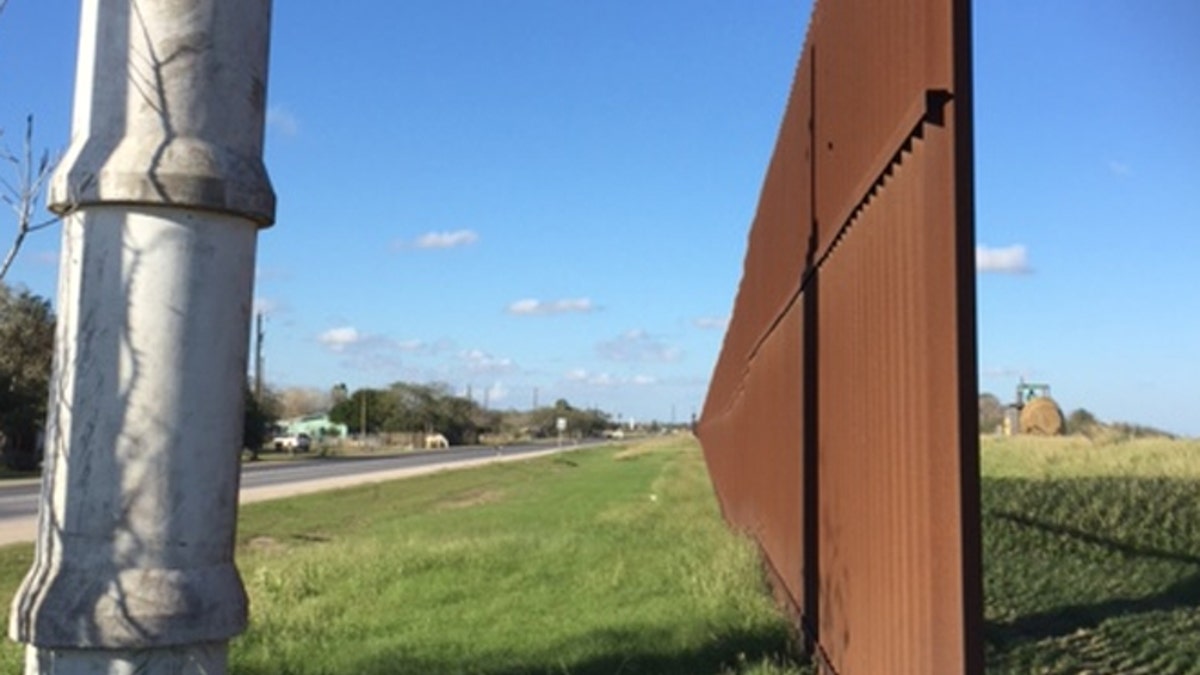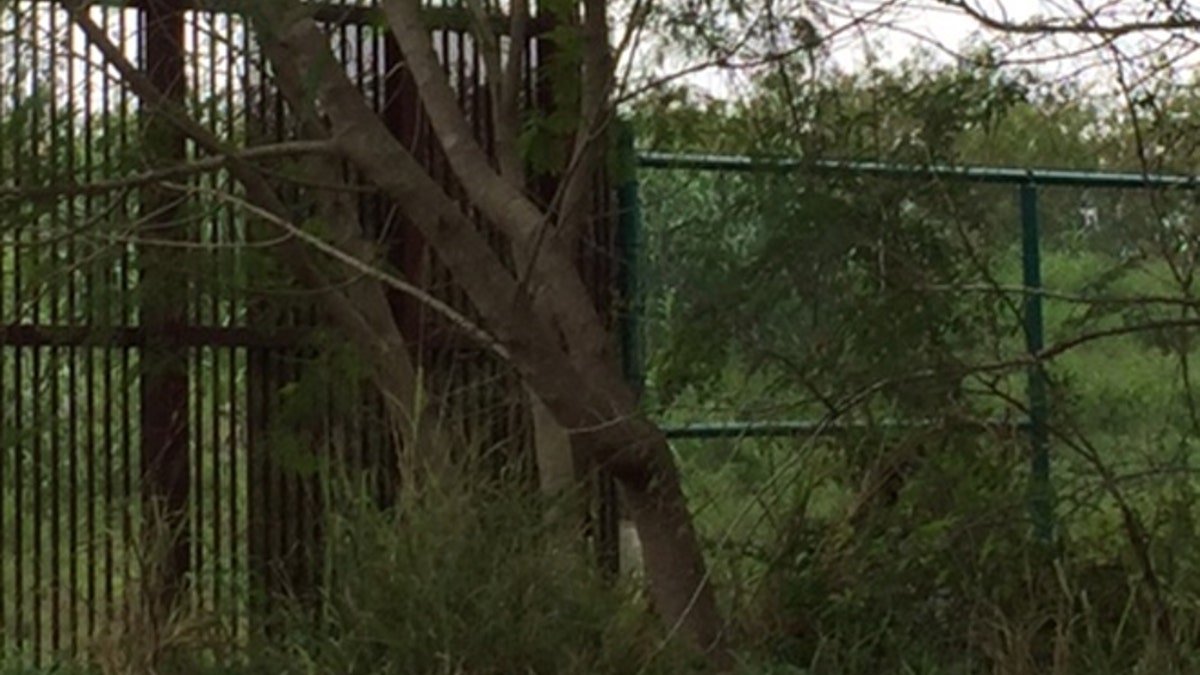
One of several border gaps in Brownsville, Texas. (FoxNews.com/Barnini Chakraborty)
BROWNSVILLE, Texas – Outside Brownsville, the 'wall' is made of rust-colored steel bars embedded in concrete. Elsewhere, it's a mix of steel and metal mesh.
In other spots across the southwest, it's nothing at all.
The southern border barrier that separates the U.S. from Mexico is in fact a mishmash of materials that stops and starts at various points across hundreds of miles. FoxNews.com visited one patchy section in southern Texas. Together, the inconsistencies show how big a task President-elect Donald Trump would be taking on if he pursues his ‘big, beautiful wall’ on the border.
Skeptics are hardly in short supply in this region.
In border city Brownsville, Democratic Mayor Tony Martinez is convinced a wall won’t work.
“It just boggles the mind,” he told FoxNews.com. “Why are we playing this charade? It’s a form of deception to the American people.”
CARTELS EXPLOIT BORDER WALL FEARS
Opinions in border communities like Del Rio, Laredo, Brownsville, Mission and McAllen are split. While almost everyone FoxNews.com spoke with said security needs to be beefed up, they question whether the wall is feasible.
Given the inconsistent barrier in place now, residents could be forgiven for having a hard time visualizing the kind of epic construction feat Trump wants to achieve.
The U.S.-Mexico border, all told, stretches more than 1,900 miles from the coast of California to the southern tip of Texas. Right now, 654 miles of that has fencing of some kind.
The kind of fence varies from location to location.
The El Paso sector, for example, uses “post-on-rail” steel set in concrete in some sections and a steel mesh fence in others. In San Diego, a bollard fence with cantilever – the kind used for federal buildings – is in place. In Yuma, it’s a metal mesh fence.
But the landscape along the south Texas border is diverse and unlike parts of New Mexico, Arizona, California, it zig-zags through the river, and cuts through people’s backyards, farmers’ fields and even the University of Texas Rio Grande Valley campus.
“It’s really a totally stupid thing,” Cameron County Sherriff Omar Lucio told FoxNews.com of the current set-up. “It’s 10 feet high and has huge openings.”
Lucio, who is responsible for protecting a large swath of south Texas, says some border crossers skip the wall altogether and use the mouth of the Rio Grande River to raft across from Matamoros, Mexico -- something a border wall might not be able to stop, either.
Illegal immigrants also can take advantage of other gaps in the wall along terrain too tough or expansive to patrol regularly.
“Most agents are in favor of some sort of wall or fence, although a wall alone won’t make the country safer,” Jon Anfinsen, president of Local 2366 of the National Border Patrol Council, told FoxNews.com. “There are other sectors that will simply not support a wall because of the terrain, so a wall has to be combined with new technology and additional manpower to make the country safer.”
Anfinsen says while other sectors could support a wall on most or all of its border in their areas, his is “too hilly to feasibly make a wall on its entire stretch of border.”
The border fence was authorized under the Secure Fence Act of 2006, which was passed by a Republican-controlled Congress and signed by President George W. Bush. The legislation OK’d hundreds of miles of fencing along the Mexico border.
Since then, it’s been tweaked. Then-Texas Sen. Kay Bailey Hutchison pushed a measure that would give the Department of Homeland Security the authority to decide what type of fence should go up in different areas – the reason why there are so many different types of border barriers in place today.
As the border was being redrawn – in south Texas, it’s almost 2 miles north of the natural border of the Rio Grande River – people who had homes or businesses there paid the price.
Ray Loop’s family farm sits at the southernmost point along the border. Big, rusty 18-foot high steel bars courtesy of the federal government now dissect sections of it.
There are also gaps – lots of them, which border crossers use to make it over. Sometimes, they’ll hide in his citrus bushes waiting for the all clear. If that doesn’t work, they climb over on parts of the border that are lower.
“It takes them about a minute and a half to climb the wall,” he said.

Border fence near Brownsville, Texas. (FoxNews.com/Barnini Chakraborty)
Brownsville’s mayor showed FoxNews.com some of the holes in the wall. In one spot, the rust-colored bars end and a much shorter green fence begins. It’s easily traversable by migrant workers, asylum seekers, drug smugglers and human traffickers.
But Martinez says building a bigger, better wall like Trump has proposed won’t stop those determined to make it into U.S. territory.
Instead, he believes cross-border communication with Mexican authorities would go a long way toward cutting down on illegal immigration.
Cindy Johnson, a deaconess at United Methodist Women in Brownsville who works with illegal immigrants, agrees. As a lifelong resident of Brownsville, she urged Washington lawmakers against rushing to judgment on the benefits of a border wall.
“Lawmakers who’ve never even visited border communities shouldn’t be determining their futures,” Johnson told FoxNews.com.




